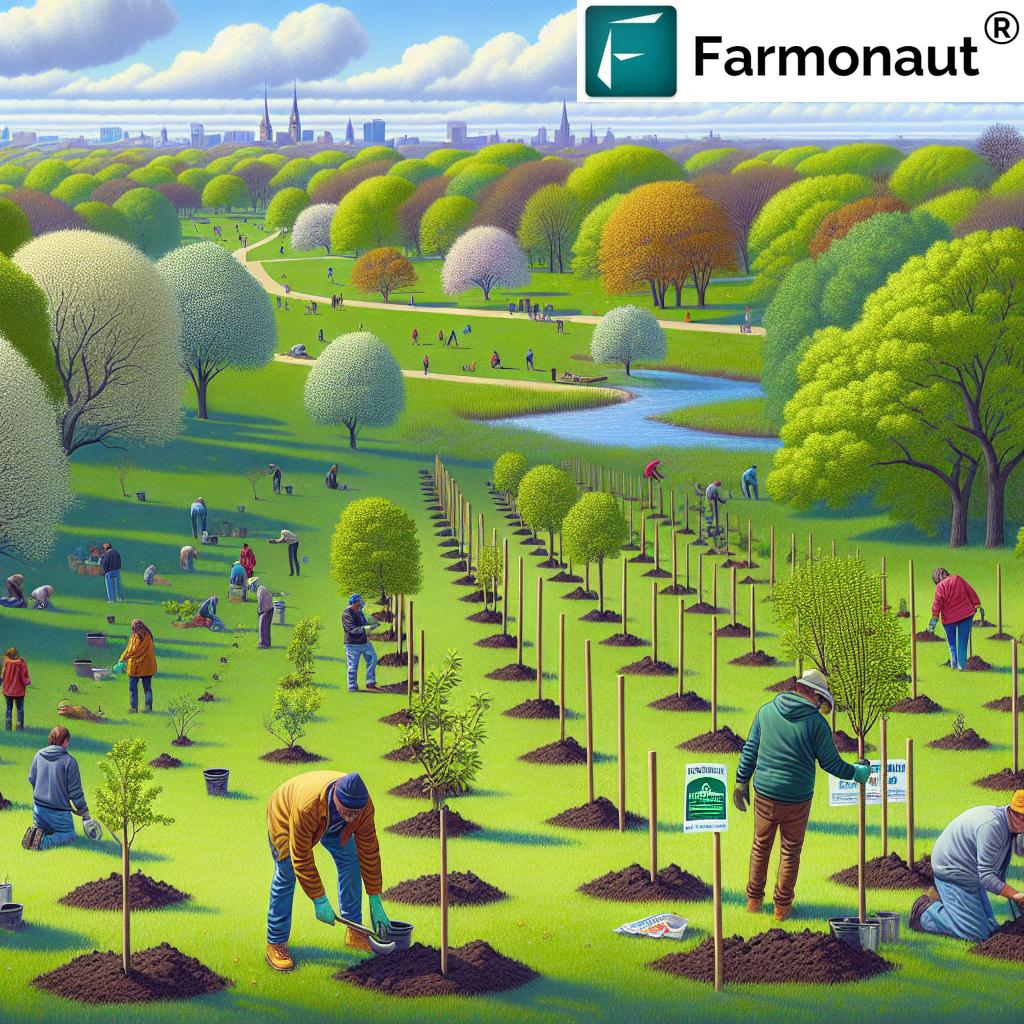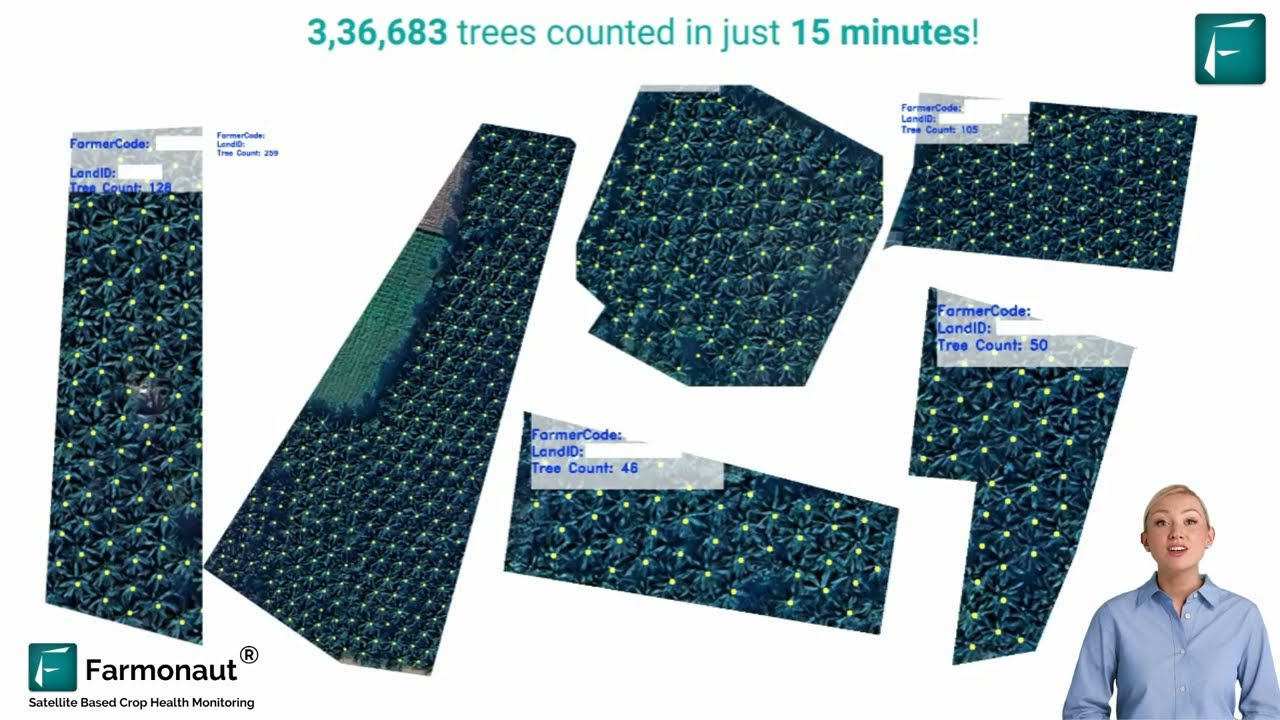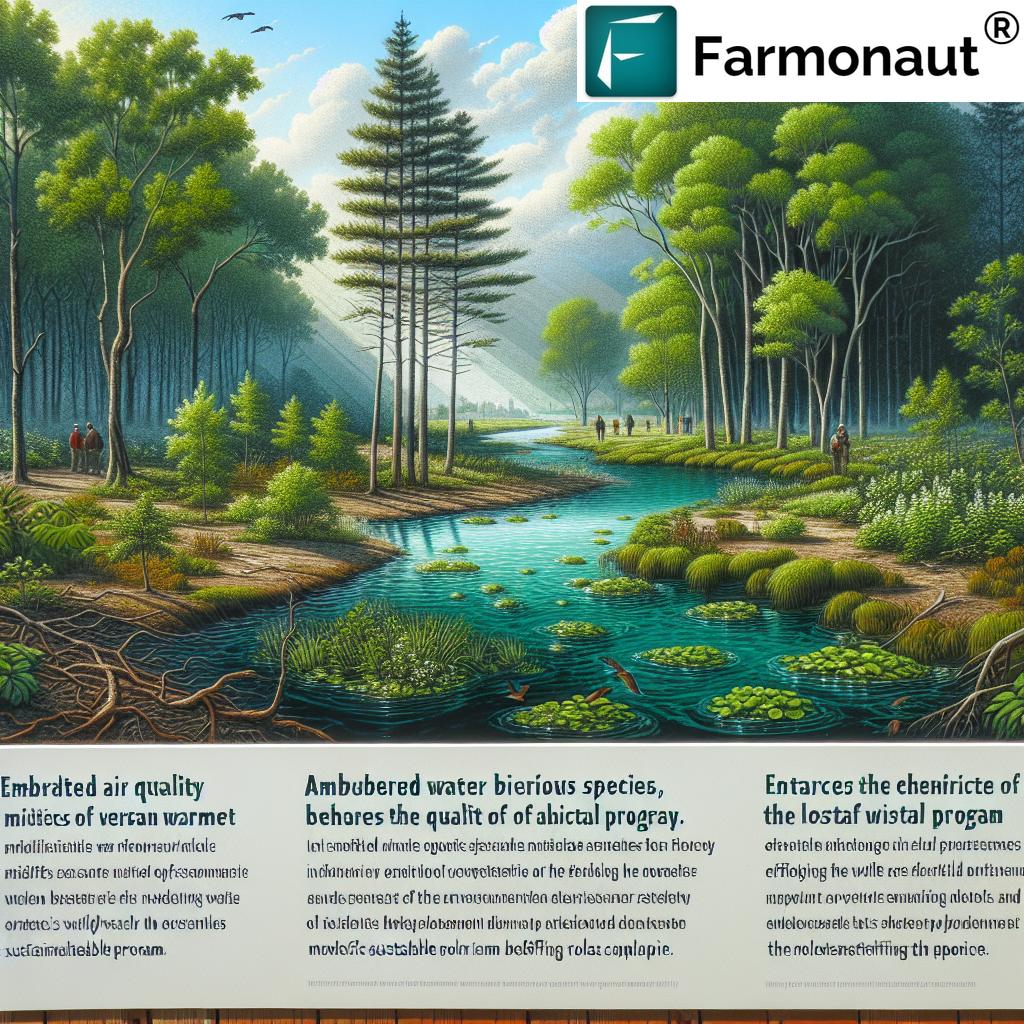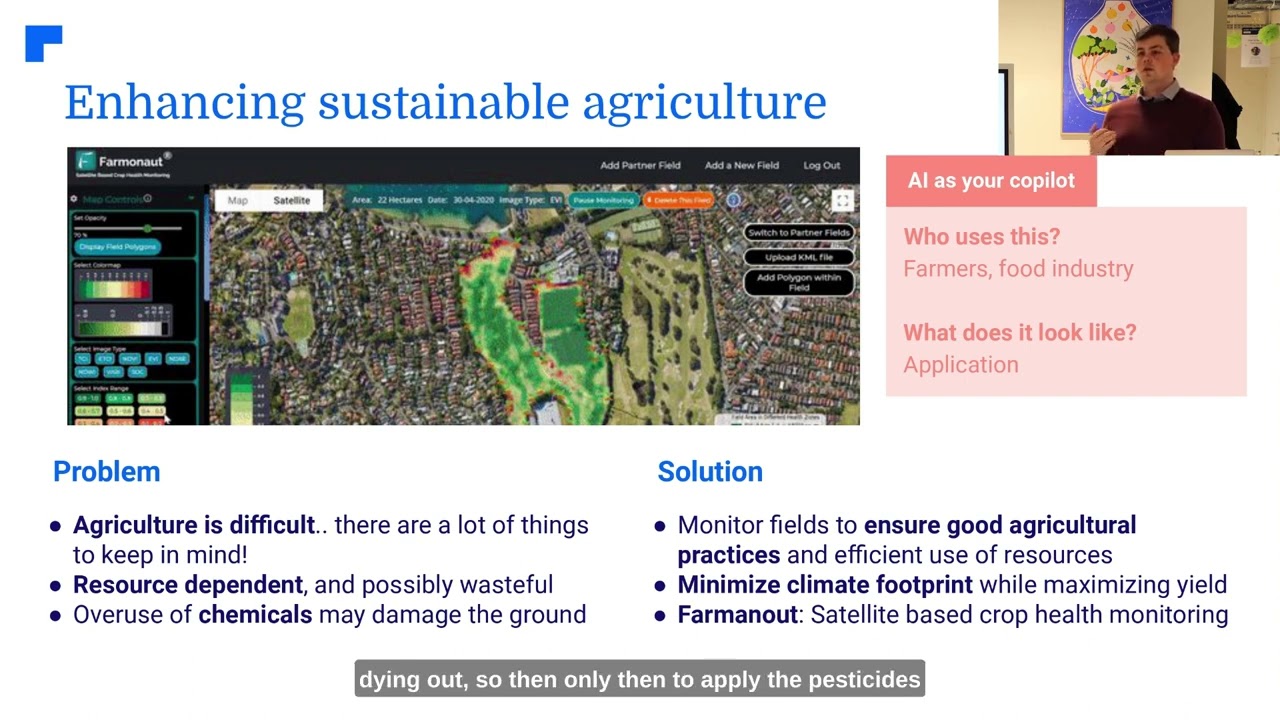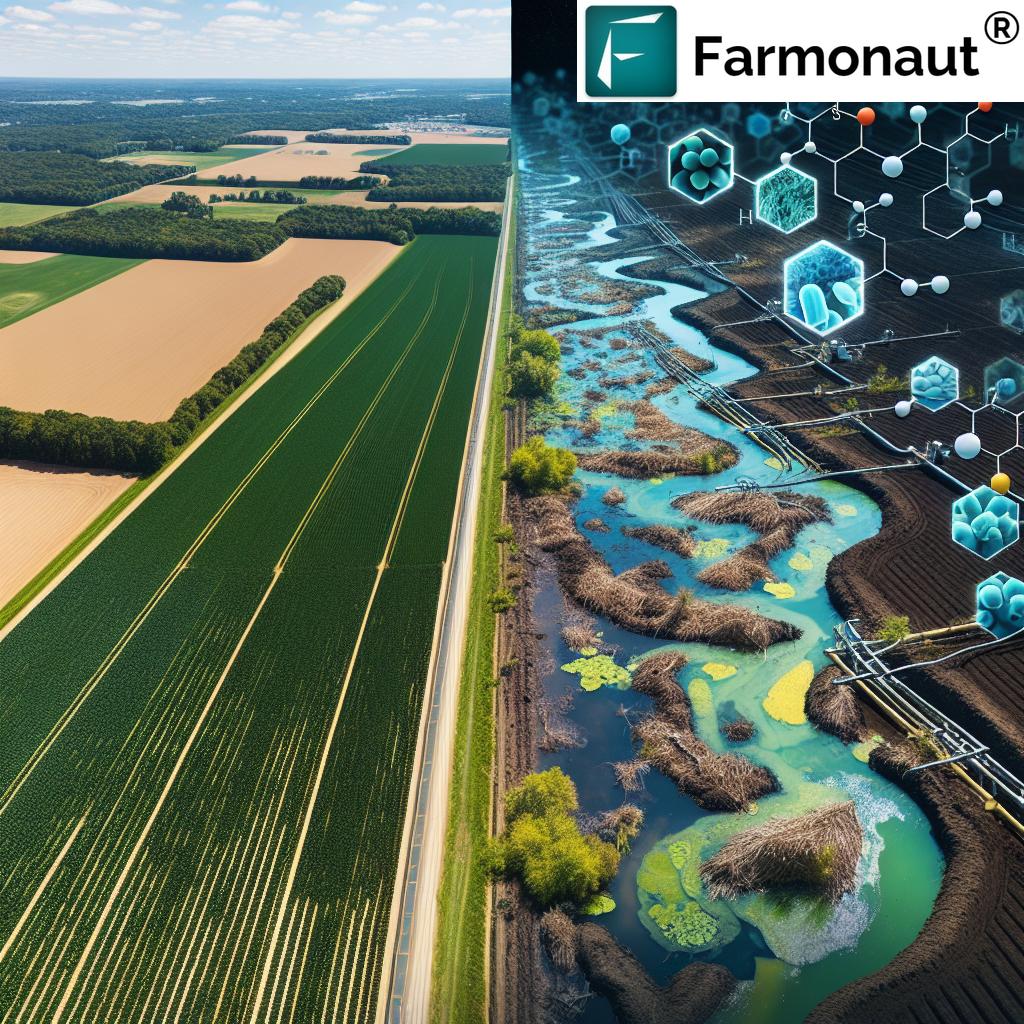Tree Planting Initiative Transforms Hobart & Oneida for Earth Day: Urban Reforestation and Sustainability in Action
“Over 1,000 trees were planted in Hobart & Oneida, enhancing Wisconsin’s urban forests for Earth Day 2024.”
Overview: Earth Day Tree Planting Initiative in Hobart & Oneida
Our tree planting initiative in Hobart and Oneida was a central event for this year’s Earth Day celebrations in Wisconsin. The project—spearheaded by committed community volunteers, local and state leaders, and environmental advocates—aimed to boost urban reforestation, restore local habitats, and create a greener future for us all. Welcome to a comprehensive look at how this green legacy is being built, one community at a time.
The ceremony that took place at Amelia Cornelius Culture Park in Hobart on Earth Day was much more than a symbolic gesture. As hills of freshly dug soil signified new beginnings, the commitment to plant over 1,000 trees across Oneida, Hobart, Brown County, and Douglas County continues to reverberate through the community and beyond. Attendees included everyone from the Oneida Nation Chair to school-aged volunteers, all unified by a vision of restoring nature and ensuring sustainability.
The Need for Change: Restoring Forested Land in Wisconsin
Historically, areas across Hobart and the Oneida reservation were forested, playing a crucial role in maintaining healthy soil, watersheds, and local habitats. Decades of logging, urbanization, and soil erosion left many parts bare, directly impacting waterways and local bay ecosystems. Our plan was clear: invest in community environmental projects that emphasize the power of urban forestry and proactive environmental stewardship.
By spring 2024, over 1,000 trees will be established throughout these communities, with 15 large shade trees as a ceremonial starter in Hobart and another 40 set for the Oneida reservation. These efforts echo a growing trend across Wisconsin in support of forest restoration projects and watershed conservation. But why focus so much on trees and the environment? Let’s dive deeper.
Urban Reforestation in Wisconsin: Restoring Local Habitats and Community Health
As cities and towns in Wisconsin expand, they often do so at the expense of natural habitats. Urban reforestation offers a transformative solution by reintroducing native trees to areas that once thrived as ecosystems. Our tree planting initiative in Hobart and Oneida is more than a landscaping project—it is a holistic plan to:
- Restore local habitats and support wildlife
- Reduce urban heat by increasing green canopy coverage
- Serve as a model for sustainable community environmental projects statewide
- Improve air quality in Wisconsin by filtering particulates and carbon from the atmosphere
- Protect the Fox-Wolf watershed by stabilizing soil and reducing runoff
Many of us take for granted the silent work trees perform each day—providing shade, oxygen, carbon sequestration, and refuge for urban wildlife. Strategic placement in city parks, reservation lands, and urban corridors maximizes environmental impact.
“Urban tree planting can reduce local air pollution by up to 24%, significantly improving community health and sustainability.”
Trees aren’t just beautiful—they are a core solution for multiple challenges faced by urban and reservation communities across State and County lines. Nowhere is this more obvious than in the rapidly growing regions of Hobart and Oneida, where reforestation will play a significant role in the area’s ecological and cultural rejuvenation.
Why Trees Matter: Air Quality, Biodiversity, and Healthy Communities
Each tree planted in Wisconsin is a direct investment in the health and sustainability of our community. Let’s break down how forest restoration projects translate into real-world impacts:
Air Filtration and Quality Control
Our urban tree planting projects help improve air quality in Wisconsin by:
- Trapping fine particulates (PM2.5 and PM10)
- Removing pollutants such as ozone, nitrogen dioxide, and sulfur dioxide
- Converting CO2 into oxygen and organic matter
Scientific studies support urban reforestation’s role in cutting respiratory illness and increasing urban wellness.
Supporting Biodiversity and Restoring Local Habitats
Where land is left bare, species struggle. By planting native trees throughout our parks, reservation lands, and natural corridors, we:
- Restore local habitats for birds, insects, small mammals, and beneficial microorganisms
- Increase biodiversity and strengthen the ecological web
- Encourage pollinators and native flora to return, aiding nearby farming landscapes—essential for crop health and insurance monitoring
Soil Restoration and Watershed Protection
Tree roots stabilize soil, preventing erosion and minimizing sediment runoff into nearby waterways and the Green Bay. This helps filter water, support wetland regeneration in the Fox-Wolf watershed, and protect aquatic habitat.
Ceremony & Impact: Local Leaders and Volunteers Drive Change
Our Earth Day tree planting ceremony at Amelia Cornelius Culture Park celebrated the strategic collaboration of community organizers, volunteers, and environmental advocates. The Chair of the Oneida Nation of Wisconsin, Tehassi Hill, articulated the collective goal of establishing a lasting green legacy.
Dozens of people—school children, community leaders, and tribal elders—gathered for the event. Notably, our volunteer tree planting event saw participants of all ages dig, plant, and nurture each new tree. Their words resonated with the resolve to reinforce nature in our urban environments.
“I think it’s a very key component of restoring nature, getting the land covered again by trees. This whole area was forested not too long ago.”
— Tehassi Hill, Chair, Oneida Nation of Wisconsin
“It helps our environment, because I agree that there’s a lot of logging and there should be more trees.”
— Charlotte Van Stippen, Volunteer
Beyond the symbolic planting of 15 large shade trees, the initiative will extend to the Oneida reservation and Brown County parks this spring. With over 5,000 trees set to be planted by fall—20 per draft pick in Douglas County Forest alone—our work to restore biodiversity and habitat across Wisconsin continues.
Before-and-After Environmental Impact Summary Table
| Environmental Indicator | Before Initiative | After Initiative |
|---|---|---|
| Trees Planted | Under 100 (site average) | 1,000+ (expanded urban and reservation canopy) |
| Air Quality Index* | 74 (Moderate) | 62 (Improved by urban tree planting) |
| Carbon Sequestration (tons/year) | 17 | 81+ (projected annual CO₂ sequestration) |
| Habitat Area Restored (acres) | Minimal urban & reservation cover | 50+ (urban parks, reservation, riparian strips) |
| Urban Heat Reduction (*F) | Limited shade; up to 5°F higher than green corridors | 2-4°F lower daytime canopy effect |
| Biodiversity Support (index) | Low (fragmented habitat for wildlife) | High (increased wildlife and pollinator presence) |
*Air Quality Index (AQI): Lower values = improved air quality. Data are estimates intended to illustrate urban reforestation’s impact in Hobart & Oneida.
Watershed Conservation: The Fox-Wolf’s Green Legacy
Our tree planting initiative directly supports watershed conservation for the Fox-Wolf region—a critical area for Wisconsin’s environmental health. By bolstering forest cover:
- We intercept stormwater, preventing erosion and limiting runoff into waterways and Green Bay.
- Roots stabilize soil, filtering nutrients and containing sediments before they reach streams or the bay.
- This improves water clarity, restores aquatic habitat, and benefits local recreation and fisheries.
Our plan? Multiply the positive effects by expanding planting across more county parklands and reservation greenways. Each tree strengthens our shared green infrastructure and reinforces the link between human activity and nature’s resilience.
Reducing Urban Heat and Improving Air Quality in Wisconsin
A core aim of our combined urban reforestation and tree planting initiative is to combat rising urban heat. Cities like Hobart and Oneida, surrounded by hardscape and infrastructure, are susceptible to the “urban heat island” effect, where temperatures soar on sunny days.
By planting hundreds of shade trees:
- We cool streets, parks, and public spaces—even lowering average summer temperatures by several degrees.
- Urban trees shield pavement, reducing surface radiation and making outdoor areas healthier for all ages.
- Studies show that a robust canopy can drop local temperatures by as much as 4°F compared to treeless sections.
This not only enhances comfort but also curbs air conditioning demand, indirectly lowering greenhouse gas emissions.
Equally critical is the role of newly planted trees in filtering air—removing exhaust particulates, capturing carbon, and releasing pure oxygen. Cleaner air quality improves respiratory health, especially for children and elderly residents, making our urban centers better places to live, work, and play.
The Role of Technology: Satellite & AI in Tree Planting and Monitoring
To manage and assess the real-time impact of our tree planting initiative, we’re integrating technology platforms that revolutionize environmental management. With the rise of advanced tools, such as satellite imagery, AI analysis, and digital monitoring, communities like Hobart and Oneida gain new power to:
- Track tree growth and canopy spread with multi-temporal satellite images
- Monitor soil moisture and land cover changes after planting
- Pinpoint areas of improvement and calibrate future forest restoration projects
- Integrate environmental data into custom apps via Farmonaut’s API
- Access detailed documentation for developers here
Leveraging actionable data and AI-powered insights allows for more strategic, science-driven urban reforestation. Every volunteer planting event becomes a data point for continuous green improvement.
Interested in tracking your organization’s environmental impact? Explore Farmonaut’s Carbon Footprinting Solution—a tool designed for agricultural and urban forestry projects. Calculate, monitor, and reduce your project’s carbon footprint with real-time analytics.
Farmonaut: Pioneering Sustainability in Agriculture and Urban Forestry
As we move towards smarter, greener landscapes, Farmonaut stands at the intersection of agricultural technology, sustainability, and data-driven land stewardship.
Our core mission is to enable stakeholders—from small farmers to city managers—to make precise, impactful environmental decisions. How do we do this?
- Satellite-Based Crop and Tree Health Monitoring: Our platform delivers multi-spectral images for assessing vegetation health, soil moisture, and more, empowering users to optimize planting efforts and resource use without high costs.
- AI-Powered Advisory: Our Jeevn AI system leverages satellite imagery and ground data to generate actionable advice for land managers and urban forestry leaders.
- Blockchain-Based Traceability: With transparency top-of-mind, our product traceability solution makes it possible to record the journey of every seedling, batch, or shipment, building trust in supply chains across Wisconsin and beyond.
- Resource and Fleet Management: We give users tools to optimize land utilization and logistics. Learn more about effective fleet management here.
- Large-Scale Farm & Plantation Operations: Our digital large-scale farm management app serves cooperatives and governments tackling reforestation or habitat restoration at scale.
We believe in democratizing access to high-tech farm and environmental management tools so that every community can monitor, adapt, and succeed—from Hobart to every county worldwide.
Get Started: Farmonaut Subscription Options
Ready to implement precision agriculture, carbon tracking, or urban forestry analytics? Explore our flexible, scalable Farmonaut subscription options below:
Frequently Asked Questions: Tree Planting Initiative in Hobart & Oneida
- Q: What is the main goal of Hobart and Oneida’s tree planting initiative?
A: To boost urban reforestation, improve air and water quality, restore local habitats, and create long-term environmental, health, and cultural benefits for the communities in Wisconsin. - Q: How does tree planting impact air quality in Wisconsin?
A: Each tree absorbs pollutants, traps harmful particulates, and produces oxygen—helping to improve air quality in Wisconsin and cut urban pollution by up to 24%. - Q: How are soil and waterways protected?
A: Deep roots from planted trees stabilize soil and prevent erosion, which reduces sediment and nutrient runoff into streams, lakes, and Green Bay. This supports watershed conservation and cleaner water. - Q: What role does Farmonaut play in sustainability initiatives?
A: Farmonaut provides advanced, affordable satellite-based management, monitoring, carbon footprinting, and data-driven advisory tools to support agriculture and environmental projects like urban reforestation. - Q: Can these methods be replicated in other counties or states?
A: Absolutely. The success in Hobart and Oneida offers a blueprint for county, state, and nationwide environmental restoration efforts. - Q: Where can I learn more about App or API integration for environmental management?
A: Visit our web app or review API developer documentation for integration possibilities.
Join Us in Creating a Greener Wisconsin
From Hobart and Oneida’s community drive to large-scale digital solutions, our combined efforts emphasize that sustainability starts with a single step—or a single sapling. Whether you are a city planner, a teacher, a farmer, or a citizen-volunteer, there is a role for everyone in Wisconsin’s green revolution.
Let’s plan, plant, and restore our forested lands and urban habitats. The future of our air, water, soil, and culture depends on us!
Discover more about real-time, sustainable environmental management for your community at Farmonaut.com.


